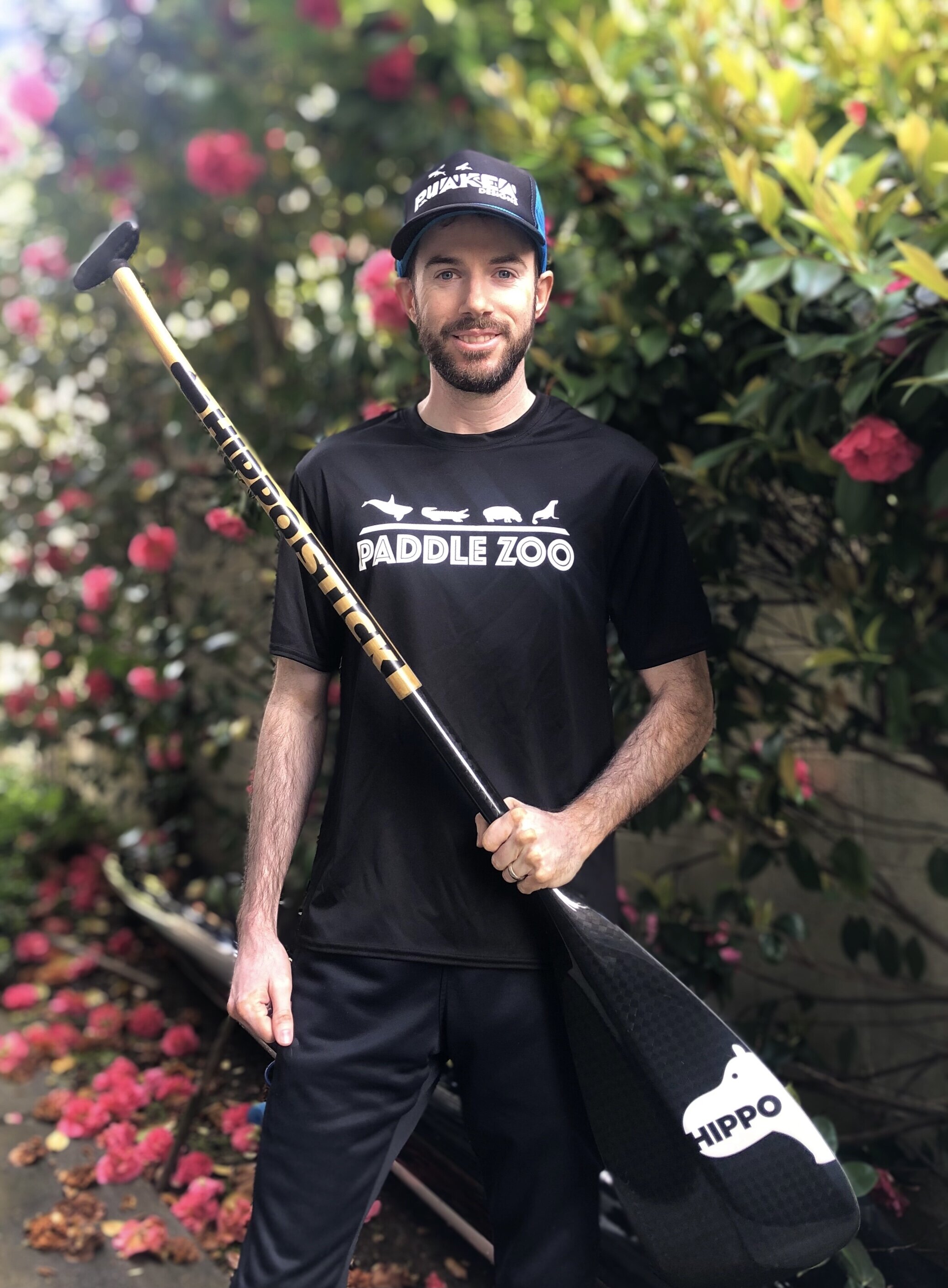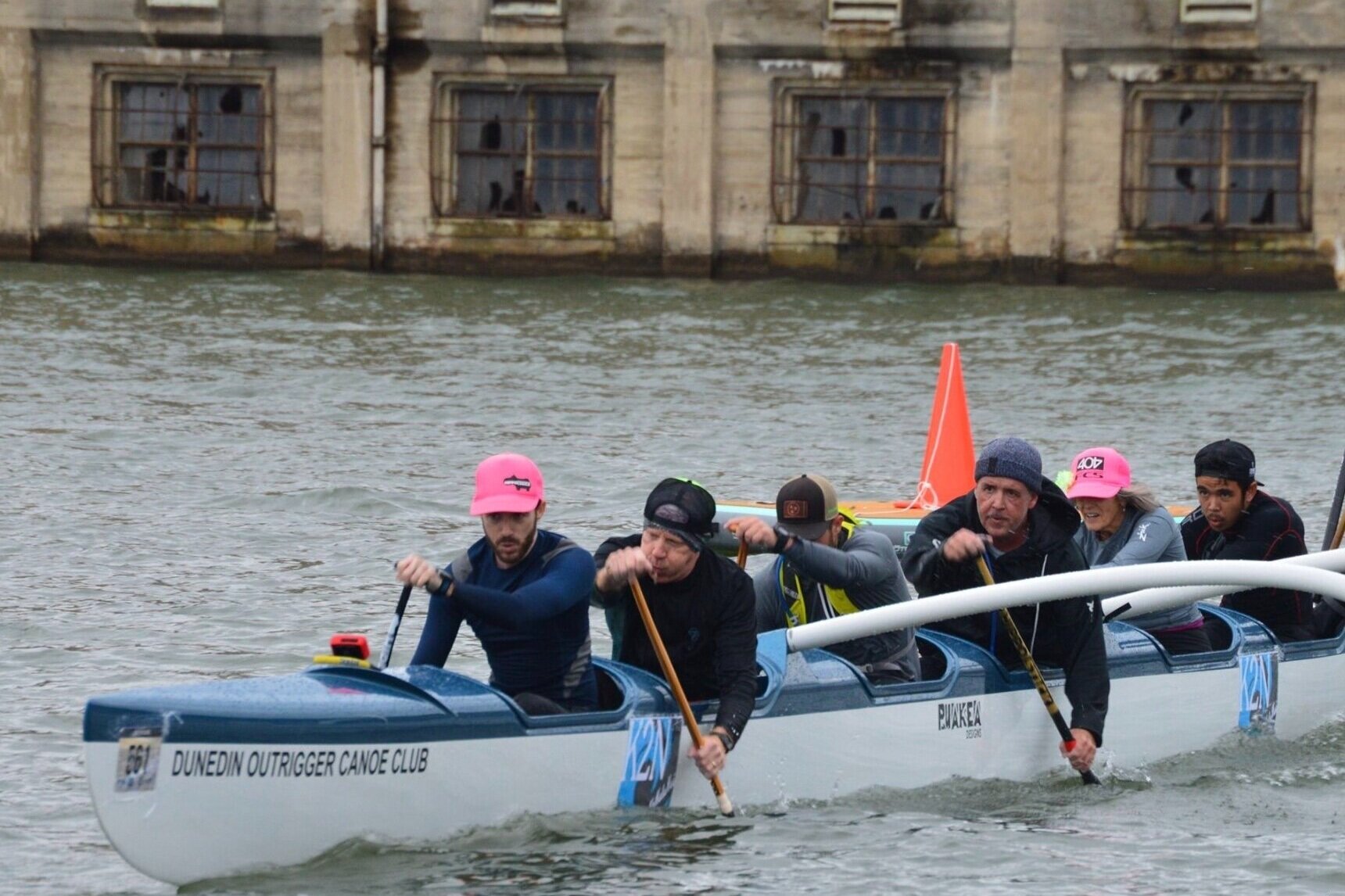“why do you paddle?” with puakea ambassador matt kearney
Puakea Ambassador, Matt Kearney of Paddle Zoo. Follow along on Matt’s paddling adventures on IG at @stokeonthewater and @paddlezoo.
Post Author: Matt Kearney
June 30th, 2021
We have been following Matt for awhile now and were so stoked to add him to our team this year! He just completed the Seventy48, so in this blog post he dives into his experience and what it took to compete in this 70 mile race.
My road to paddling competitively was a long one. I was so wrapped up with academics and my artwork while in school, I felt like I never had the time to even follow sports, much less compete in them.
I started paddling SUP recreationally in 2011 a few years after I graduated from college. It didn’t take long until the competitive bug bit me and within a matter of months I went from recreational paddling to racing my big wide recreational board. I eventually added a race board to the quiver and joined a race team.
Over the years I looked up to some of the greats of the sport like Danny Ching, who also raced outrigger canoes, and I finally was able to get my first OC1, an Ehukai, in late 2017. There were no OC clubs around me in my part of Florida so it took years before I finally paddled in an OC6. These days, I have a Kahele, I’m a Puakea Ambassador, and I have a small online business called Paddle Zoo that caters to paddlers of all kinds.
During the unbelievable year that was 2020, my wife and I sold our house in Florida and drove across the country during the pandemic to move to Seattle. Here in the Pacific Northwest, I’ve found some of the best paddling waters in the world, a vibrant and welcoming paddle community, and I am now a member of a strong, close-knit club called Sand Point Outrigger Canoe Club.
I love paddle races of all kinds, but the adventure of ultra-marathon races has always had a special draw for me. After earning the coveted 5-year belt buckle from Chattajack, a “31-mile” race in Chattanooga, Tennessee, I found myself ready to take on a new and bigger challenge in my new home. That’s where the Seventy48 race comes in.
In this race, competitors have 48 hours to complete 70 miles from Tacoma to Port Townsend, Washington. Some people camp along the way and take breaks. Others paddle straight through nonstop. While Chattajack is on a big calm river during daylight hours, Seventy48 is on the open waters of the tidal Puget Sound and starts at 7pm. Tides here can rise and fall by up to 13 feet. There are only two checkpoints along the way, one near the start and one near the finish, the course is up to you, so it’s fairly easy to get lost. The race is completely unsupported – getting support along the way is against the rules. Similarly to how Chattajack often shakes out, the weather this year was the X-factor.
This isn’t the kind of race you just sign up for. You have to apply for it with a solid resume and be approved by the organizers at the Northwest Maritime Center. Then your boat and equipment are inspected before the race. If you have all the right equipment and you pass the inspection, only then can you line up on race day.
A few of my Sand Point OCC teammates signed up for the race with me and we trained together for only a little over a month leading up to the race. We made the best of the training time we had, though. I can’t take credit for it because I relied on my teammates’ training plans, as some of them had done the race in the past (in OC6) and are more familiar with the Puget Sound waters than I am. Rather than focusing only on time and mileage on the water, we made sure to scout tricky parts of the race course so that we would know what to look for on race day. We paddled in the middle of the night on sections of the course we knew would be dark when we hit them so that we knew what lights to aim for and navigate by.
We paddled another section in the morning to find the fastest currents we could use on race day and know what landmarks to aim for when trying to find a tiny canal opening from 12 miles away. It turns out this training strategy was incredibly useful. And it didn’t hurt that, because it gets dark early in the winter here, we had plenty of experience paddling on rough waters and doing downwinders in the dark.
I was among 96 teams to start the race in Tacoma. This race probably had the most diverse array of paddle craft in any race I’ve been in. Besides the usual OCs, surf skis, and SUPs that we usually see, there were also rowing sculls, rowboats, and homemade wooden multihull boats full of high schoolers from land-locked Colorado.
Leading up to the race, the wind forecast began to really excite those of us on OCs. It was starting to look like most of the race would be a downwinder through the night. Unfortunately, that didn’t pan out like we hoped. There were some downwind sections, but there were also a ton of difficult ama-side wind and upwind sections. Our OC1s still managed this better than most craft out there because we train in those conditions and they are built for open ocean paddling. One gratifying moment from the race came up because of those windy conditions. A rower had been slowly extending their lead on me in the first 15 miles, while the conditions were fairly flat. Then the wind came and the bumps started to follow. Soon enough I found myself catching and flying past him like he was standing still, never to be seen again.
Downwinding using only starlight to read the waves and flying your ama through bioluminescence is the kind of stuff dreams are made of. There’s something about these ultra distance races that gets me a bit emotional when I hear friends or loved ones cheering me on from various places along the course and at the finish. Knowing they’re pulling for you and taking time out of their life to be there for support is really special. I even heard people I don’t personally know cheering me on in the dark as I rounded the Point No Point lighthouse before sunrise.
When setting my time goal, I took the following factors into consideration: I had only a little over a month to train, I’m unfamiliar with much of the Puget Sound, and this would be my first race over 32 miles. A respectable time paddling nonstop would be fine with me, and I set my goal to simply finish in under 15 hours.
I ended up completing the race in 13 hours and 13 minutes. This time was within the range of what I thought possible - at the faster end, actually - but what I didn’t expect was to finish with the rank I did. When I got to the finish line and saw the leaderboard, there was my name, beside 6th Overall. You see, because so much of the race is in the dark in open water, it’s hard to keep track of your position. Before the sun went down, there was an OC6 ahead of me, several rowers, a speedy OC2, surf skis, and many more. But by the time I reached the finish all by myself, I had passed most of them without even realizing it. Only one other OC finished ahead of me, in 4th place - an OC1 paddled by my Sand Point teammate Patrick Hwang. My other Sand Point OCC teammates crossed in the top 16 overall, including the first overall solo female, Minnie Fontenelle, in 11th, and Ernie Wong in 16th.
Of the 96 brave teams that started the race, only 43 found a way to battle the weather and make it to the finish line. I suspect with 48 hours, the vast majority would have finished if not for the strong wind and rough seas. Throughout the night, I listened to the drama unfold over my VHF radio as various distress calls came in from racers who needed assistance. Because it was an unsupported race and in open waters of the Puget Sound, the Coast Guard was kept busy trying to rally nearby boaters and even a ferry to help racers in distress. I was thankful to have trained for conditions like these and to be racing on a Kahele, a craft designed for it. I also used my hybrid Polu paddle which has quickly become my preferred distance racing paddle.
Ultra distance races like the Seventy48 require a lot of training, drive, and commitment. But the feeling of accomplishment you get from them is unmatched, and the opportunity to learn more about your abilities to push through adversity can provide a boost that helps you in every other part of your life. Even a DNF in a tough race like this offers countless ways to learn, improve, and come back better prepared for anything.
So what’s next now that I’ve graduated from 32 mile Chattajacks to the 70 mile Seventy48? Maybe another one to see if I can improve my performance based on what I learned this time. Maybe the 360 mile WA360 race that circles the entirety of the Puget Sound. There’s no shortage of ultra distance paddle races to consider. But for now, it’s too soon to think about that. I’m just looking forward to seeing everyone in the Gorge this summer.
Mahalo Matt for taking the time to give us such a great rundown of the Seventy48! We too are looking forward to seeing everyone at Gorge very soon.














